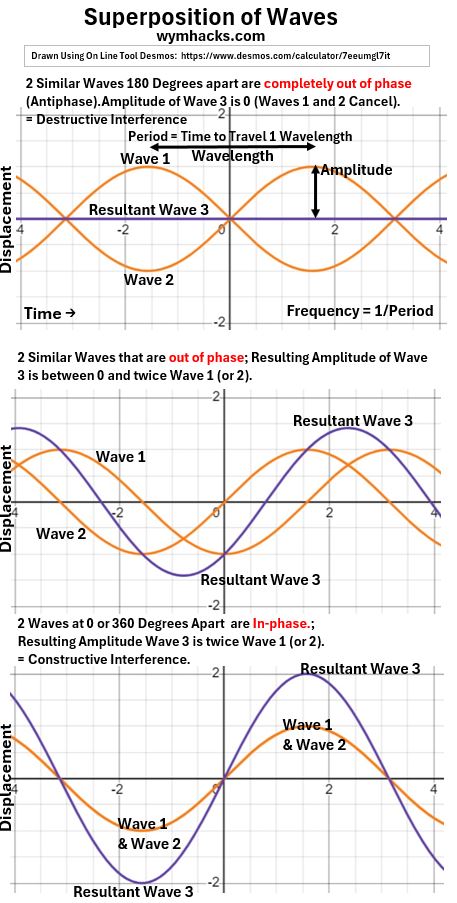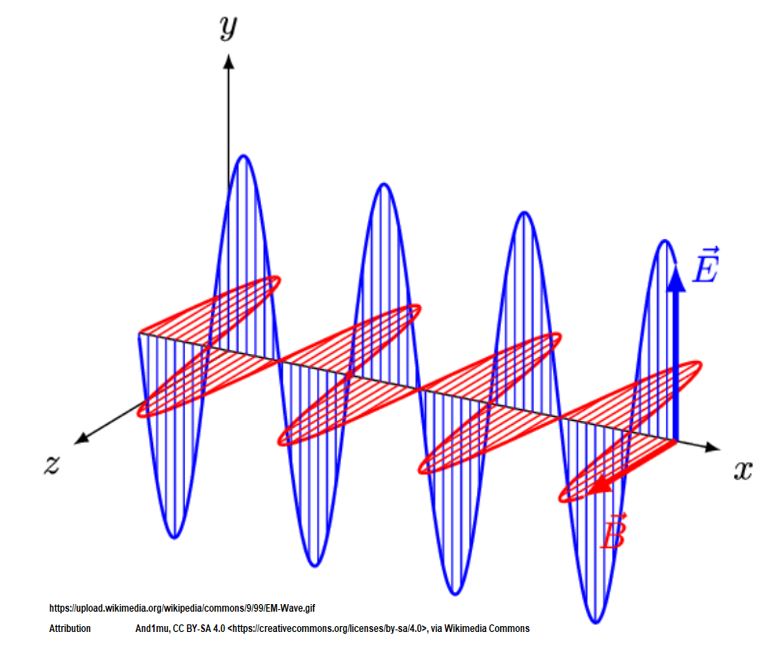Menu (linked Index)
Wave Superposition
Last Update: October 20, 2024
Introduction
Electromagnetic waves produced by different sources will combine in a process called superposition.
In this post, we’ll describe basic wave superposition and why light slows down when entering a medium with a higher refractive index.
Also refer to my posts:
- Refractive Geometric Optics
- Understand Your Eyes which has links to my other eye and optics related articles.
Electromagnetic Wave Superposition
Electromagnetic Waves are additive; a concept known as Superposition.
In the 3rd graph below, two waves of the same wavelength are lined up and peaks and troughs match.
- They will produce a resultant wave that has a a higher peak.
In the 1st graph below, the two waves are lined up so peaks line up with troughs.
- In this case, the two waves will cancel each other (the resultant wave will have zero amplitude).
If the wavelengths are different, they will still be additive.
- But the resultant wave won’t necessarily be symmetrically shaped.
Picture_Superposition of Waves

Even waves moving at different speeds (remember velocity = frequency x wavelength) are additive.
Why Light Slows Down When it Enters a Refractive Medium
When light enters a higher refractive medium (e.g from air to water or glass), it interacts with the atoms and associated electrons in the material.
The electrons of the medium begin to oscillate due to the light waves.
This oscillation creates separate oscillating electric fields (and therefore “new waves”).
- Superposition occurs among the light waves and the waves from the oscillating medium electrons.
- The resultant waves are always slower moving.
- This is why the light slows down in the medium.
- This slowing down is influenced by the properties of the material, such as the density and arrangement of atoms and molecules.
- The index of refraction is a measure of how much a material slows down light compared to its speed in a vacuum.
- Index of Refraction = n = (speed of light in a vacuum)/(speed of light in the material) and will always be > 1 for any material
- For air, n is slightly larger than 1 (n = 1.0003) since the speed of light in air is slightly less than the speed of light in a vacuum.
- As soon as the light exits the medium, the interference from the medium oscillating electrons ends (i.e. superposition effect ends).
- So, the light exiting the material resumes the speed it had before entering the medium (e.g. light going from air to glass to air)
In summary, the interaction between light and electrons in a refractive medium leads to the slowing down of light waves.
As soon as the medium electron wave interference ends (as the light exits the medium), the speed of light in air resumes.
Disclaimer: The content of this article is intended for general informational and recreational purposes only and is not a substitute for professional “advice”. We are not responsible for your decisions and actions. Refer to our Disclaimer Page.

